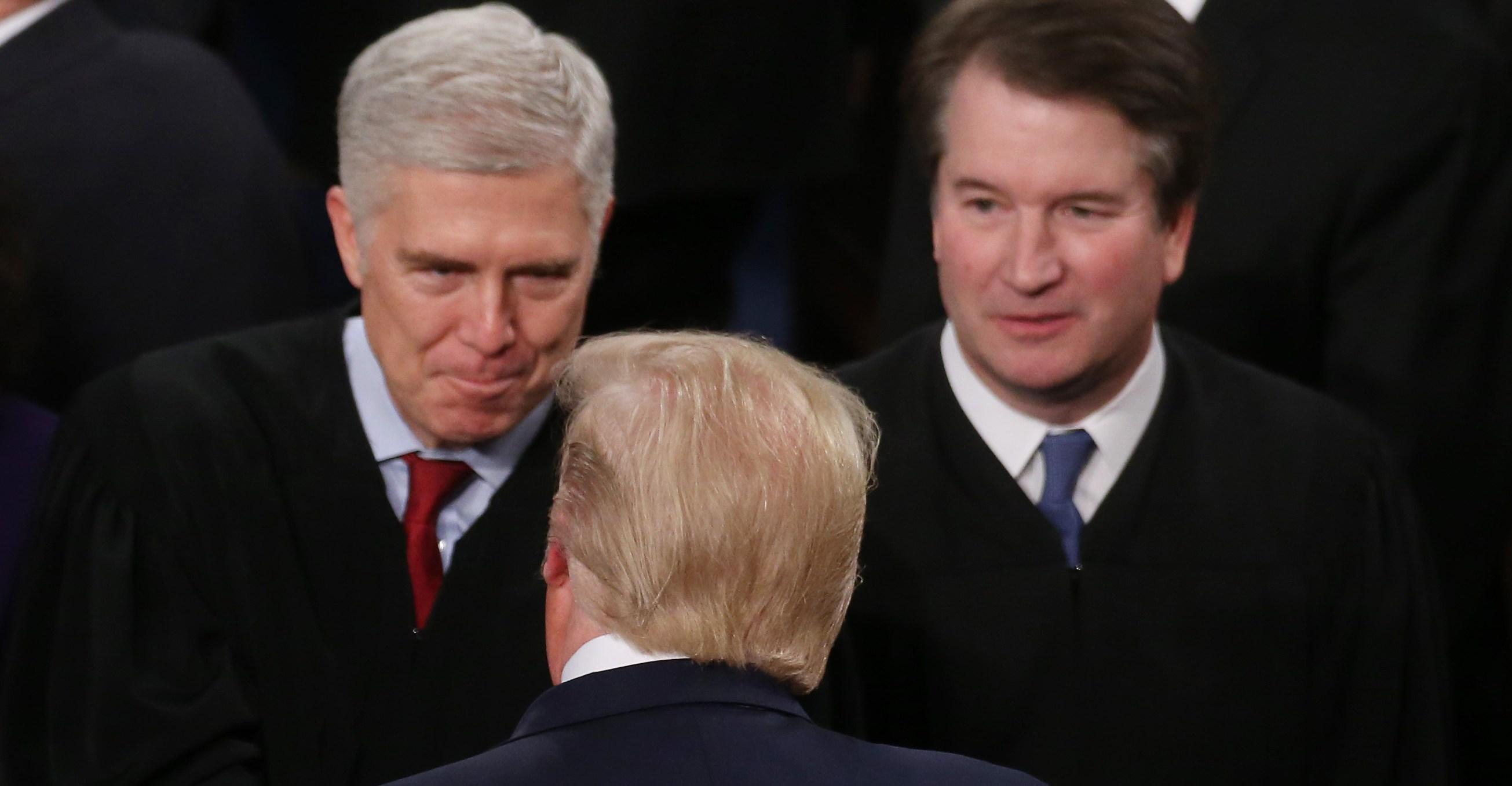Many Americans are going to have sticker shock when they sign up for health insurance this year. For the roughly half of Americans who get insurance through their work, premiums are set to grow by another 6 percent on average, up to roughly $27,000 per year …

Published 10 hours ago on Oct 31st 2025, 7:00 am
By Web Desk

Many Americans are going to have sticker shock when they sign up for health insurance this year.
For the roughly half of Americans who get insurance through their work, premiums are set to grow by another 6 percent on average, up to roughly $27,000 per year for family coverage. That is a 26 percent increase since 2020. Costs have been steadily climbing for a long time now: Rates are more than twice as high as they were in 2010.
And then there are the 24 million people who buy insurance on the Affordable Care Act marketplaces who face much higher increases — by 30 percent on average next year because Congress can’t agree on a deal that would keep them lower. This is the sticking point at the center of the ongoing government shutdown.
Defending and expanding federal health care funding has been a winning issue for the Democrats since Republicans tried and failed to repeal the ACA in 2017. But is the law worth defending, really? If it has been such a success, then why are costs still climbing for the vast majority of Americans?
It’s a complicated story with a complicated answer.
The ACA was designed to expand coverage, not to control costs
The ACA has one unambiguous success: The uninsured rate in America is around 8 percent, roughly as low as it has ever been, half what it was before the law passed. More than 40 million people have been covered by either the marketplaces or Medicaid expansion.
[Image: https://platform.vox.com/wp-content/uploads/sites/2/2025/10/Rb4up-the-us-uninsured-rate-has-plummeted-since-the-affordable-care-act-became-law.png?quality=90&strip=all]
But you would be forgiven for thinking the real purpose of the ACA was to lower the cost of health care for everyone: It is named, after all, the “Affordable Care” Act. And Democrats sold it on that premise.
“In the end, our goal is to make health care more affordable for families, businesses, and the federal government. If you have health insurance, the reforms we seek will bring stability and security you don’t have today,” President Barack Obama said in 2009 during a speech to Congress as the bill was being debated. “For those who don’t, we’ll offer you quality, affordable choices. And we’ll finally keep insurance companies from discriminating against those who are sick and need care the most.”
But in reality, affordable health care is still elusive. Most of the law’s provisions and funding focused on “those who don’t” — on expanding coverage to the uninsured. The vast majority of ACA spending was earmarked for financial assistance for people who buy insurance on the marketplaces or for covering the cost of expanded Medicaid for people who are in or near poverty.
For many of those people, the law has delivered clear benefits.
Insurance companies can no longer deny them coverage for preexisting conditions, and the federal government is stepping in to cover much of their health care costs. According to one study, Medicaid expansion saved about 27,400 lives from 2010 to 2022. Bankruptcies for Medicaid patients dropped. Evaluations of the ACA marketplaces likewise find that the people signing up for those plans who were previously uninsured are now better off.
But those wins encompass, at most, about 13 percent of the population. For everyone else, the ACA’s record is mixed.
Yes, even employer plans are now required to cover preventive services, including some forms of birth control, for free. Yes, those plans also now have to place an annual limit on how much patients can be asked to pay for their medical care. But more diffuse savings — going to your annual physical and not owing a $30 copay is nice — aren’t as life-altering as getting covered for the first time in years. The new annual out-of-pocket limits only come into play if you have a serious medical situation; they are a valuable safety net, but not necessarily something that makes more routine health care more affordable.
Nevertheless, the ACA has grown in popularity over time as more people have gained health care access. But it’s proven not to be enough to fix the problem of rising costs.
Health care costs are still rising too fast — and we don’t have a great plan to stop it
Democrats said they want to lower the country’s overall health care costs within the framework of the ACA, but the law’s provisions to actually do that were limited. The current law allows the government to run pilot projects that could bring down the cost of healthcare, but while some have shown promise, they have not been adopted widely enough to fundamentally change how healthcare is financed in the United States.
But the ACA is not a major financing reform bill. It did not fundamentally change how providers set prices for their services. And the law’s new insurance requirements to cover all people, no matter their health status, and to provide a broader suite of benefits actually pushed costs in the other direction. It is simply more expensive to require insurers to cover everyone.
Over time, though, there have been some positive effects on costs. Medicare spending has flattened, and the ACA likely deserves much of the credit for that, given its direct payment cuts. But if you look at other measures, such as medical price inflation or workers’ contribution to their premiums, as New York Times economics reporter Talmon Joseph Smith pointed out on X, it’s hard to see any discernible impact from the ACA at all.
Obama and congressional Democrats hoped that the ACA would bend the cost curve over time. Part of the plan was those targeted payment reforms. Part of it was the belief — still contested to this day — that giving people health insurance would lead to them being healthier in the long term, which would save money over time.
But, at least so far, the law appears to have merely put a ding in the cost curve.
Health care costs are growing at a slower rate, but they are still growing: According to a 2020 Health Affairs review, national health spending grew at a 6.9 percent annual pace from 2000 to 2009 and then a 4.3 percent pace from 2010, the year the ACA was passed, to 2018.
[Image: https://platform.vox.com/wp-content/uploads/sites/2/2025/10/yrAI5-us-health-care-costs-have-been-growing-at-a-faster-and-faster-speed.png?quality=90&strip=all]
The ACA delivered real benefits, especially to particular patients, but it did not solve the problem of unaffordable health care. Even people who have health insurance increasingly struggle to afford their medical bills because costs have kept rising: The rate of underinsurance — when you have coverage but can’t afford your medical bills — has been steadily rising for years.
And now the US population is getting older, and the cost crunch is likely to only get worse as more people require more serious medical care.
So what do we do?
America’s health care system is stuck
No country’s health care system is perfect, but ours is uniquely flawed: We spend more money than our economic peers and yet we see worse outcomes. We’re getting a bad deal, and Americans understandably want health care prices to come down.
And so it makes sense that Republicans and Democrats are fighting over what comes next — and why they’re at such an impasse: Both sides have a point.
Democrats acknowledge that the ACA is flawed. In 2021, the party made federal subsidies more generous and made more people eligible for them. Now, they want Republicans to agree to extend those enhanced subsidies in exchange for the votes to reopen the government, arguing that without the additional funding, health care would become unaffordable for many people.
Republicans, on the other side, have never liked Obamacare. They believe the continued increase in health care costs is evidence that the ACA was a bust, and they are reluctant to pump any more money into it — especially, they would argue, when Democrats are holding the government hostage over the issue. They want the Democrats to fund the government, without any strings attached, before they negotiate ACA funding. (The GOP may not support the law, but they do worry about voters blaming them for rising costs and may be willing to deal. They just don’t want to give in to Democrats with the government shut down.)
Health insurance is going to become a lot more expensive for people if Congress refuses to act. And people who lose their health coverage are more likely to skip necessary medical care and let chronic conditions fester, which can lead to worse outcomes. Progressives believe it is better to have the government pick up the tab, even as health care costs continue to rise, rather than to let people get sick or die because they can’t afford medical services. And most Americans agree: More than 60 percent of the public believes it is the federal government’s responsibility to make sure everyone has health coverage.
And yet, GOP leaders are also correct when they point out that health care costs kept rising after the ACA. That has required the federal government to funnel more and more money into health care to keep costs down for people on the ACA’s marketplaces or on Medicaid, while those people on employer-sponsored plans have seen their premiums more than double since 2010.
But at the same time, Republicans don’t have much of a plan to reduce aggregate costs. In general, they talk about deregulating health insurance again — which could then re-create all of the problems that predated the ACA and led to its passage in the first place. And their major legislation passed this year, the One Big Beautiful Bill Act, did cut Medicaid funding, but by cutting people off the program — not the best approach if the goal is to improve people’s health, even if it does reduce government spending.
Some conservatives have become more interested in tightly regulating health care prices, and President Donald Trump has tried to use the bully pulpit to address prescription drug costs specifically. But the prevailing attitude within the GOP is still to try to get the government out of health care — and whether that is the fix for an industry already beset by market failures is, at best, dubious.
Absent better ideas and the political will to implement major changes to the health system, we’re left with little choice but to keep pumping more money into a broken system — or leave more people on their own to cover unaffordable medical bills.
To escape that trap, we’d need to make health care pricing more rational and value-based. Rather than pay providers based on the volume of services they perform, could a system instead connect their payments to the quality of care they provide and the outcomes that their patients experience? There have been halting steps in that direction — with health insurers like Cigna experimenting with value-based contracts with providers — but it is difficult to build on that momentum both practically and politically, given the power of the various health care industry lobbies.
The shutdown has revealed the fragility of the US safety net: When food stamps run out of funding in early November, thousands of people could struggle to afford food.
But the standoff will end eventually. It’s even plausible that Democrats and Republicans will reach a deal on extending the ACA subsidies. But that is just another Band-Aid. Patients will keep feeling the squeeze every time they sign up for a new health plan or check out at the doctor or pharmacy — until policymakers get serious about the real problems making health care unaffordable to too many Americans.

Pakistan and Afghan Taliban agreed to maintain a ceasefire during talks
- 8 hours ago

Any external aggression will be met with a strong and severe response, DG ISPR
- 4 hours ago

ExxonMobil accuses California of violating its free speech
- 12 hours ago

DOJ indicts a congressional candidate in Chicago
- 10 hours ago

The best way to help Hurricane Melissa survivors may not be what you think
- 10 hours ago

Oppo Find X9 Pro’s massive 7,500mAh battery arrives in Europe
- 12 hours ago

The BrickBoy upgrade kit costs more than twice as much as the Lego Game Boy
- 12 hours ago

The tariffs case is Trump’s ultimate loyalty test for the Supreme Court
- 10 hours ago

Gold prices surge in Pakistan, global markets
- 5 minutes ago

No-confidence motion against the PM (AJK) has been delayed again
- 5 hours ago

YouTube will restrict more content showing ‘graphic violence’ in video games
- 12 hours ago

Projecting the CFP top 12 after Week 9: Vandy's in the field!
- 11 hours ago
You May Like
Trending







.jpg&w=3840&q=75)




